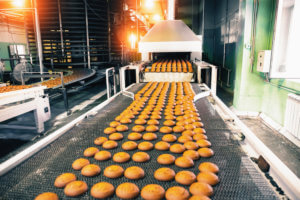Having a pest problem can be destructive to any business’s success and reputation, especially in the food industry. With a decrease in typical pest management pressures during the winter months, it becomes the best time for food processing professionals to reevaluate their pest management programs. Check out the top five ways to help prevent pests during the colder months and set your facility up for success in the coming year.
Prepare for third party audits

With strict third-party audits and food safety to consider, maintaining a pest-free facility is critical. In fact, pest control counts for up to 20% of your facility’s total score. To achieve high marks, pair an Integrated Pest Management program, including sanitation, exclusion, and facility maintenance, with thorough documentation.
Not only are third-party audits necessary for your food processing facility, but they also help monitor the flow of food safety, predominantly market-driven, throughout the supply chain. For example, if a restaurant opens a package full of ants, they can come back and blame it on the facility that housed that package during transit. You’ll want to have proof that the infestation did not originate or get transported through your warehouse.
Implement pheromone trapping programs for stored product pests
Stored product pests, like beetles and moths, can threaten food supply during any stage of processing and at any time of year. They are challenging to locate without proper monitoring because they are tiny (approximately 1/8 inch) and like to feed on grains. It’s nearly impossible to spot these small pests before they begin to multiply rapidly. Usually, they are only recognized when employees notice damaged boxes and containers – and by then it may be too late to stop the spread.
A pheromone trap uses species-specific semiochemicals used by different organisms to lure pests. Pheromone traps enable pest management professionals to use synthetic versions of the stored product pests (SPPs) pheromones and place them in traps to draw adult SPPs out of their hiding spots.
Review trends from previous years

Evaluating previous pest control efforts can be one of the most valuable determining factors in predicting the seasonal impacts of rodents or pests in your food processing facility. Knowing where the hot spots are located and pinpointing odors and moisture will help provide a road map to forecast pest trends for the coming year.
Before implementing a new program, it’s imperative to review all available pest history information including:
- Previous pest and rodent management efforts
- Pest sighting data
Monitor for Pesky Flies
If the history of your food processing facility shows flying insects as a problem, it may be time to invest in additional fly lights. These lights help provide control and prevent further contamination that may happen. It’s best to place the lights two to five feet high on the inside walls next to exterior doorways or loading-dock doors. And don’t forget to put in areas where employees bring items from the outside – including cafeterias, breakrooms, and office areas.
Do not install fly lights close to competing light sources, water or other damp locations, high-traffic areas, or near excessive heat sources such as ovens or furnaces.
Don’t forget about the outside
While pests can make their way into your facility via shipments and even on people, the biggest pest threats start outside. Reduce exterior conditions which may attract rodents such as food spills, high vegetation, and poorly maintained storage areas.
- Keep vegetation at least 12 inches from your facility
- Remove leaves quickly so pests cannot hide in them
- Install a gravel strip around the perimeter of your facility
As the temperatures fall, rodent activity increases as they seek out warmer areas with stable food sources – and food processing facilities provide just that. To make pest management even more accessible during the coming months, Western offers an online customer portal that allows you to monitor applied treatments, review reports, and pay invoices at your convenience.
In addition, Western has both Board Certified Entomologists and employs Pest Prevention Pre-requisite Programs that emphasize training, hazard analysis, cGMPs, and preventive controls for ongoing pest management to ensure your facility is always audit ready.